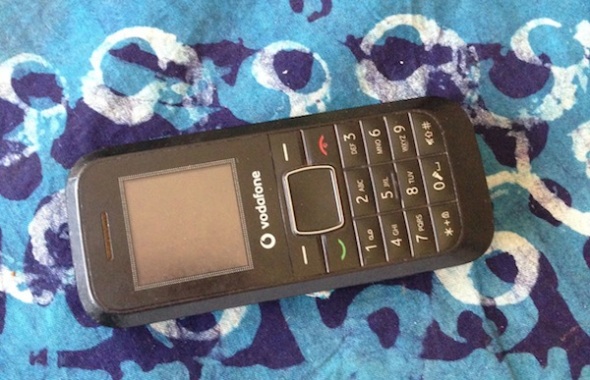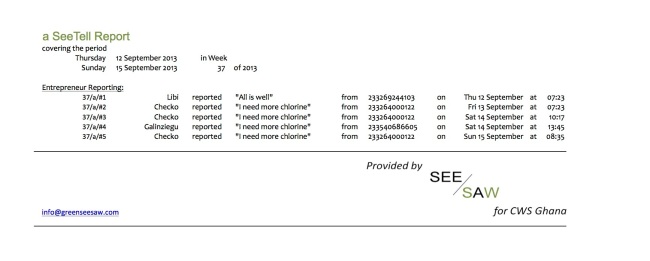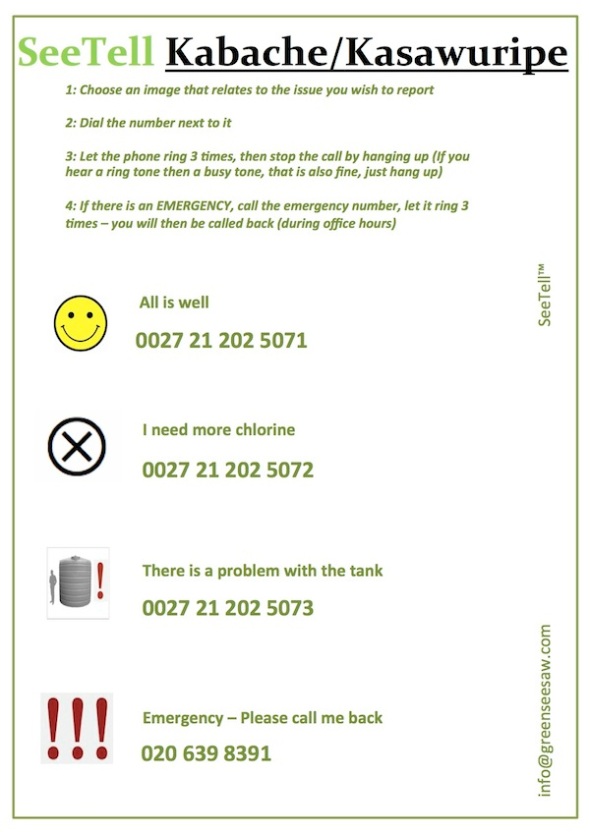At the CWS Ghana office in Tamale, the field staff and I talk about “problem villages”. These are CWS partnership communities that need help troubleshooting issues at their water businesses. The issues range in severity as the problems could be anything from the entrepreneurs having low sales because community members are busy on their farms. In this case, the use of Sales Tips could come in handy here, to improve sales and push customer expectations. On the other hand, it could also range to something as far fetched as a community believing there is a baby who comes out at night and puts evil spirits in to the polytank (this actually happened in the village of Tunga).
Let’s rewind to exactly 1 year ago and take a look at the project summaries for the communities Gbung, Jerigu and Galinzegu. This time last year the staff deemed these communities to be “problem villages”.

January 4, 2013 – Jerigu. The polytank was empty. Al Hassan’s wife said her husband is busy which is why he hasn’t been treating water. He also ran out of Aquatabs (chlorine tabelts) and did not buy more until a few weeks too late. Beginning of February 2013, community members in Jerigu complain they never know when the center has water because Al Hassan is not around.
January 8, 2013 – Gbung – Wahab went to Gbung and saw the water business was empty. He went and spoke to Fati and Amina who reported they are trying to move the polytank from the market back to the dugout. Later in January, Amina said they are paying donkeys to come fill the blue drums in the market with water for 3 GHC ($1.50)! She needs to increase her price of water to make up for this added cost.
January 18, 2013 – Galinzegu – Amina’s polytank has been leaking, so the water she treated had dripped out. She lost 3 Aquatabs worth of water. Two weeks later in February 2013, Amina ran out of alum and had not planned to buy more, and then had to travel for a funeral before she could treat water. The center was empty during this time.


One year later, these communities have all made progress. CWS staff members would even say Jerigu, Gbung and Galinzegu are currently three of the highest performing water businesses.
In Jerigu, Peter recently reported visiting the water business early one morning and monitored sales for 16 households that came out to buy water! Household visit results from January 2014 were: 10 out of 12 households visited had clean water in their safe storage containers, which is 83% and well above CWS household visit average!
Gbung also showed improvements since last year. On February 3, 2014, Amina and Fati said that sales are going well, people come to buy water whenever they run out. They have kept their center at the market and community members pay 20 pesewas ($.10) per 20 L of water.
In Galinzegu, Amina has added Massamata to her water business team. When one of them travels, the other will be there to treat water. Massamata told CWS staff in January 2014 that she is always treating and selling water. Households told field staffer Shak that they no longer have stomach pains or diarrhea because they drink the clean water!



Business is not always easy for the CWS entrepreneurs but monitoring helps. By frequently visiting the water businesses, the CWS field staff is able to consult the entrepreneurs and give them business strategy. For example the strategies used in Jerigu, Gbung and Galinzegu: having a CWS field staffer come to monitor sales, discussing a price increase of water to make up for added treatment costs, or encouraging the community to have at least two women running the water treatment center at all times, are just a few of many ideas given to the entrepreneurs. In the future, CWS hopes the business owners will be able to make these decisions on their own by learning from experience. Through the use of monitoring and meeting with the entrepreneurs to work through issues in these “problem villages”, CWS is ensuring that the water businesses will be sustainable and independent in the long run.
-Brianán






































